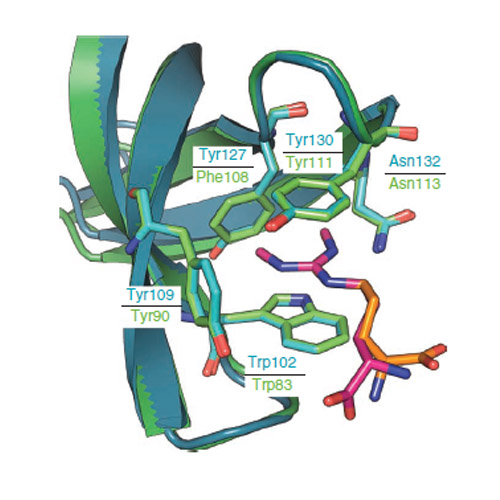Structural basis for dimethylarginine recognition by the Tudor domains of human SMN and SPF30 proteins
20-Nov-2011
Nature Structural & Molecular Biology, 2011, doi:10.1038/nsmb.2185, published on 20.11.2011
Arginine dimethylation plays critical roles in the assembly of ribonucleoprotein complexes in pre-mRNA splicing and piRNA pathways. We report solution structures of SMN and SPF30 Tudor domains bound to symmetric and asymmetric dimethylated arginine (DMA) that is inherent in the RNP complexes. An aromatic cage in the Tudor domain mediates dimethylarginine recognition by electrostatic stabilization through cation-π interactions. Distinct from extended Tudor domains, dimethylarginine binding by the SMN and SPF30 Tudor domains is independent of proximal residues in the ligand. Yet, enhanced micromolar affinities are obtained by external cooperativity when multiple methylation marks are presented in arginine- and glycine-rich peptide ligands. A hydrogen bond network in the SMN Tudor domain, including Glu134 and a tyrosine hydroxyl of the aromatic cage, enhances cation-π interactions and is impaired by a mutation causing an E134K substitution associated with spinal muscular atrophy. Our structural analysis enables the design of an optimized binding pocket and the prediction of DMA binding properties of Tudor domains.











